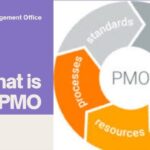
In today’s dynamic business environment, optimizing resources is key to maintaining efficiency and profitability. An essential tool that can assist businesses in achieving this goal is the resource forecasting model. Understanding this concept, its components, and how to develop a comprehensive model can be a game changer. Below, we provide an in-depth exploration of resource forecasting and tips on how to develop an effective model.
Understanding the Basics of Resource Forecasting Models
Alt text: An office with wall-to-wall windows, large tables and computers with large screens showing resource forecasting data.
Resource forecasting is an essential process in project management and planning. It helps businesses predict the resources they will need in the future for their operations or projects. It involves estimating both qualitative (like machines, materials) and quantitative resources (like manpower hours).
A robust resource forecasting model adds value to a company’s strategic planning and operational efficiencies. This is because it provides insights that lead to cost savings, risk mitigation, and optimal resource allocation.
An effective resource forecasting model assists companies in avoiding waste, increasing profitability, and staying ahead of the competition.
Essential Components of a Comprehensive Resource Forecasting Model
Every resource forecasting model generally comprises three main inputs: historical data, growth projections, and the influence of any external factors. The model should include past patterns of resource usage, future growth expectations, and the impact of external events like changes in technology or market trends.
The use of historical data provides a foundation for the model by identifying existing trends and patterns. It forms the basis for estimating future usage and helps in the treatment of cyclical demand.
Growth projections influence forecasted resource needs directly. For instance, if a company plans to launch a new product, it will need additional resources—this should be factored into the model.
Lastly, external factors or uncertainties can affect resources significantly. The influence of these elements should be modeled using scenarios or sensitivity analysis to anticipate possible fluctuations in resource needs.
Practical Steps for Developing a Robust Resource Forecasting Model
The first step in developing a comprehensive resource forecasting model is to define the goal. Is the business aiming to cut costs, optimize allocation, or prepare for growth? Knowing the goal helps in determining what data to gather and how detailed the approach should be.
Organizations should then gather historical data and identify trends. This step is essential because it uncovers common patterns that can guide future predictions.
Using the collected data and clearly defined goals, construct your forecasting model. There are multiple approaches, from simple spreadsheet models to more advanced statistical methods. The complexity of the model depends on the size of the organization and the sophistication of its operations.
Finally, test and refine the model. This process, often called validation, ensures that the model reliably predicts future resource requirements.
Improving Accuracy in Your Resource Forecasting Model
Alt text: A team around a large table is a dim office looking at a screen with resource forecasting data.
Improving the accuracy of your resource forecasting model begins with regular updating and reviewing the model’s assumptions. Businesses are not static, and a model built today may not be relevant in the future.
Having a diverse team involved can also increase accuracy. Different perspectives can identify potential issues or opportunities that a single person might overlook.
Employing sophisticated statistical methods and software can also enhance the model’s accuracy. While simple methods might work for small businesses, larger enterprises may require more robust tools.
Lastly, never disregard the feedback from industry experts or people on the ground. Their insights coupled with quantitative data often help build a near-perfect resource forecasting model.
Having a robust resource forecasting model in place does not guarantee perfection; however, it ensures preparedness. It helps businesses navigate through economic uncertainties by having strategies in place, thus saving significant costs and improving overall efficiency.





